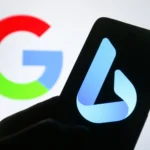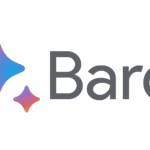:format(webp)/cdn.vox-cdn.com/uploads/chorus_asset/file/24524845/bard_is_an_experiment.jpg)
Google is updating its AI chatbot Bard with brand-new features, including support for two additional languages (Korean and Japanese), simpler text export methods for Gmail and Google Docs, visual search, and a dark mode. The company has put an end to the Bard waitlist and made the system accessible in English in 180 nations and territories. Future capabilities like AI image generation driven by Adobe and connection with external online services like Instacart and OpenTree are also promised.
The announcement as a whole gives Bard, which was made available to a small number of customers in the US and UK two months ago, a boost. The chatbot has performed poorly in comparison to competitors like OpenAI’s ChatGPT and Microsoft’s new Bing chatbot. Google continues to emphasise that the chatbot is an experiment and not a replacement for its search engine. Notably, Bard erred in fact during its first-ever public demonstration (albeit this issue affects all such bots). Google is currently updating Bard to use their new PaLM 2 language model and adding a ton of new capabilities. This should enhance both the usability and general replies.
:no_upscale():format(webp)/cdn.vox-cdn.com/uploads/chorus_asset/file/24646859/Bard_Export_to_gmail_v06.gif)
Some of today’s changes are targeted at this use case because Google claims that the improved Bard is especially excellent at handling coding queries, including debugging and explaining sections of code in more than 20 languages. The new dark mode, enhanced code citations (which will not only provide sources but also explain the snippets), and a new export button are a few of these. This currently works with sending code to Google’s Colab platform, but it will now also function with another IDE that runs in a web browser, Replit (beginning with Python queries).
With the capacity to analyze photos, provide images in search results, and generate graphics using artificial intelligence (a function that will be available “in the coming months” and is backed by Adobe’s Firefly engine), Google is making Bard more visual for more general usage.
The visual outcomes will show up in Bard similarly to how they might in some Google searches. The company uses the question, “What are some must-see sights in New Orleans?” as an example. the software produces a list of relevant locations, such as the French Quarter and the Audubon Zoo, with images similar to those seen in a regular Google image search.
:format(webp)/cdn.vox-cdn.com/uploads/chorus_asset/file/24646865/Screenshot_2023_05_10_at_11.50.24.png)
The capability to present the system with an image as a prompt is a more intriguing feature. This is made possible by Google Lens, which can recognize things in images. Google provides an example of how to upload a picture of your pets along with the instruction to “write a funny caption about these two.” The dog breeds are identified by Google Lens, and Bard then creates content that speaks to those traits. It’s a little difficult to understand, but depending on how effectively the system is linked, it could have a lot of creative potential.
According to Google, Adobe’s AI picture creator Firefly will soon be incorporated into Bard. This is significant because Adobe promoted Firefly on the basis of the “ethical” character of its training data (a charge that has prompted legal actions against other AI picture solutions). The first of many third-party integrations for Bard (which Google is referring to as “tools”), according to Google, who also promised that the system would soon be able to link directly to “amazing services across the web” and apps from Google.
Although it’s a significant addition, it’s worth noting that Google is only maintaining feature parity with its competitors. While both OpenAI and Microsoft have been investigating how to link chatbots with the wider web, Microsoft integrated AI image generation powered by OpenAI’s DALL-E technology into Bing in March. Earlier this year, OpenAI originally revealed this capability for ChatGPT with examples of using the bot to make a dinner reservation through OpenTable or place an Instacart order for groceries delivery. According to Google, it collaborates with these specific services.
Although the combination of these new features represents a significant improvement for Bard, the service still faces a more existential question: what exactly is Bard for? Even while Google emphasizes that the bot isn’t a replacement for Search, some individuals still use it that way. Is Bard just a testing ground for Google’s AI ambitions with more AI capabilities being added across its platform and improvements to Search on the horizon? If that’s the case, it might not be all horrible
Discover more from TechBooky
Subscribe to get the latest posts sent to your email.







